Motorola Droid X: Thoroughly Reviewed
by Brian Klug on July 20, 2010 4:27 PM EST- Posted in
- Smartphones
- Motorola Droid X
- OMAP
- Mobile
Micro HDMI Out
So what about that micro HDMI port on the device? The X joins a small number of smartphones packing an HDMI port of the micro variety. I’m going to start by just noting that it’s very difficult to find one of these cables except at a carrier store. Ironically, I got Anand’s HTC EVO 4G the same day I was planning on doing media center testing with the X and proceeded to spend the next few hours searching for a cable - neither the X nor the EVO bundle even an adapter. I ended up having luck at a Sprint store - point is that these cables aren’t very popular yet.
So how does HDMI out work? Its functionality is very basic right now and is limited largely to playing back a slideshow of photos from the gallery application, or video playback. I found that although the pictures slideshow worked fine, the transitions were slightly low framerate, the photos never filled up my display entirely (not even aspect ratio correct stretched, just centered and small), and generally it left me wondering why anyone wouldn’t just use DLNA to view them over something else. Maybe throw in some Ken Burns effect eyecandy, Motorola?
Videos captured on the phone itself played like I expected them to and sounded excellent as well.
Motorola will have a media dock available which promises a few more things, specifically audio playback, but without rooting and modding the device HDMI out is a bit limited. You can’t make the entire Android interface appear on your TV, for example.
There’s an HDMI settings menu in the settings menu. Inside, you can set the video output format to a maximum of 720P. I left it on automatic. There’s no other configuration here - nothing for whether you want HDMI to be the device’s sound out method, video out method, or anything else. It’s just this.
While the EVO supports YouTube over HDMI, the X does not. Videos that you can browse to and open with a file browser play over HDMI whenever the cable is connected. I had the most success with MP4 videos using the H.264 codec at 1500 kbps. I tried every type of audio profile but couldn’t get surround working on the X - for whatever reason I could only get stereo.
The music player also for whatever reason doesn’t play over HDMI when the cable is connected. However, with a bit of trickery I could get pandora or whatever audio I wanted playing over the HDMI out. Just fire up the music, then fire up gallery. Boom, all your audio will go over HDMI. It’s handy I guess if you’ve got an A/V receiver but don’t have a headphone 1/8” audio cable laying around.
When you’re doing anything that has HDMI output enabled (the photo gallery or video playback), the device turns into a basic control interface like I showed before. There are some monstrous buttons and one at the top left to exit out of HDMI playback.
Remember HTC’s excuse that the reason for the 30 FPS framerate cap was HDMI video playback? I was curious and used the Droid2Dtest application others have used on the EVO which showed the 30 FPS cap on the X.
The X is capped to 60 FPS, unlike the EVO’s 30, as shown in the overlaid screenshots above which I've annotated. Yep.
Perhaps the discrepancy is that HTC needed the 30 FPS cap for YouTube playback (which the X lacks). Either way, it’s clear that the reason HTC was capping the EVO is a bit more complicated than just for HDMI out. It’s also possible that the SoC difference is the case - remember that the Snapdragon SoC has the Adreno 200 GPU whereas the OMAP 3630 in the X has PowerVR SGX 530. It’s entirely possible HTC’s cap was there for hardware limitation reasons.
Motorola's Gallery
I mentioned the gallery while talking about HDMI out - it isn’t the Android gallery experienced on stock devices. Motorola has clearly rolled something of its own, and though it isn’t as flashy, it does get the job done.
I also noticed that it seemed a bit faster at loading previews than the stock android gallery, though at times I was still left staring at a ton of blank thumbnails.


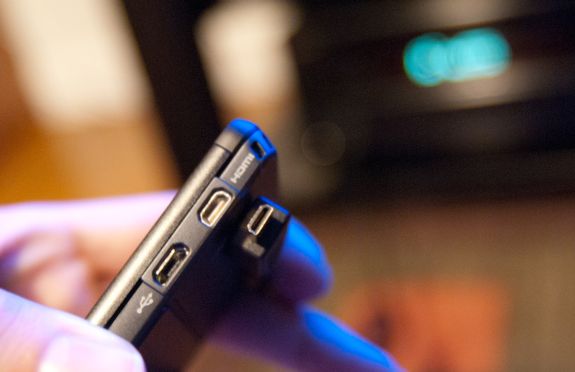
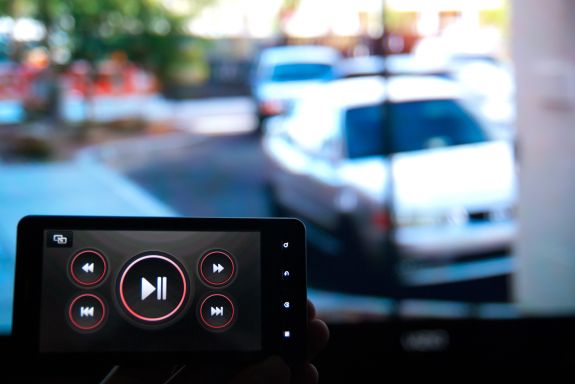
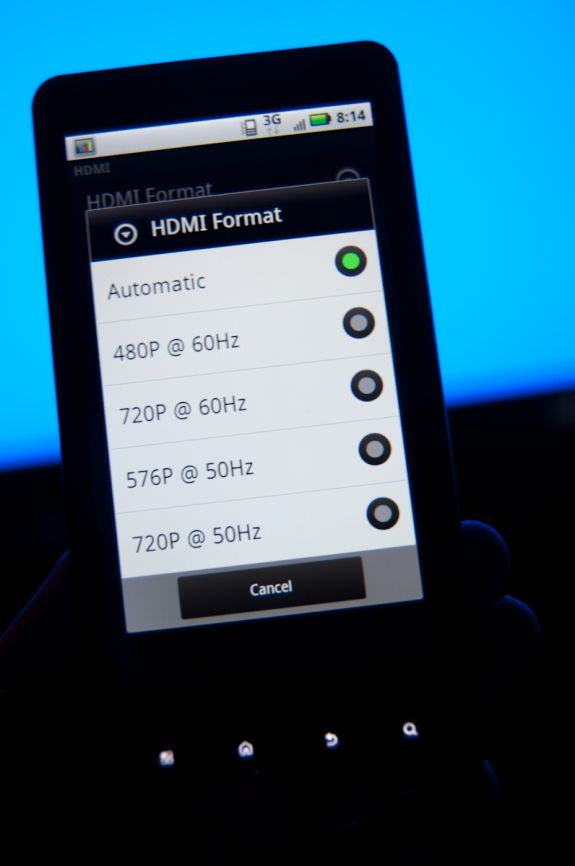
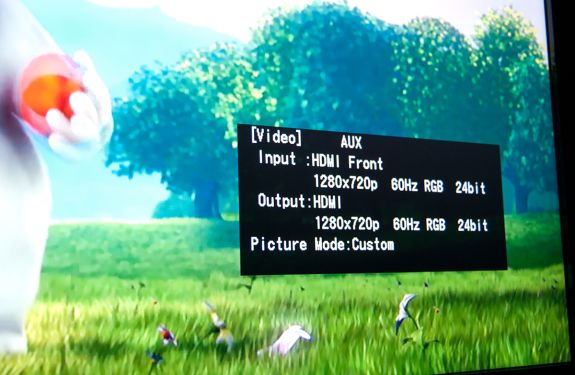

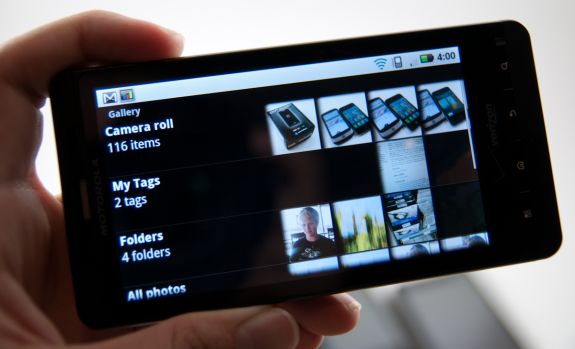
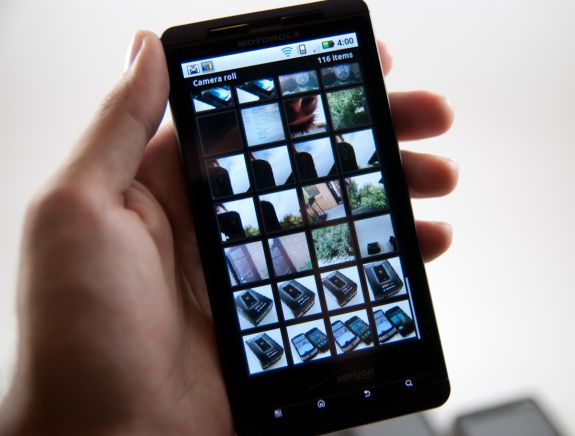
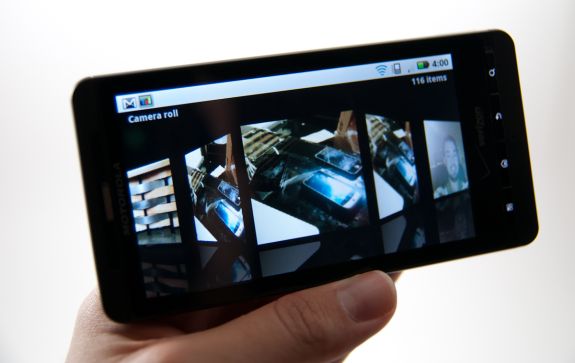








89 Comments
View All Comments
TareX - Thursday, July 22, 2010 - link
Why are all the Samsung Galaxy S phones missing from your charts and comparisons? I wanted to see how Hummingbird compared and how the Super AMOLED fared against their Droid X counterparts...strikeback03 - Tuesday, July 27, 2010 - link
Maybe because the first US version launched a day before the review went up, and they weren't sent a review sample.enealDC - Thursday, July 22, 2010 - link
Great job!Juniper Research - Friday, July 23, 2010 - link
Very interesting article... we have this week published a new report on smartphones and a free whitepaper is available to download here... http://www.juniperresearch.com/reports/next_genera...John Levett
Marketing Executive at Juniper Research
Homefries - Saturday, July 24, 2010 - link
First off, great review Brian.However, while you did a very thorough comparison of the Droid X to other Android devices, you barely mentioned the real competitor the Droid X has to stand up against: the iPhone 4.
Readers want to know if the Droid X is the best phone on the market - the whole market - not just the market subset dedicated to Android devices.
Like the majority of the tech media, your review furthers the notion readers belong exclusively to either the iOS camp or the Andriod camp. This is simply not true. Informed readers, like the ones that peruse Anandtech, want to buy one smartphone, regardless of any marketing slants, that is the best.
Your review of the Droid X should have helped us answer the question, "Should I buy the Droid X or the iPhone 4?" But, it did not.
strikeback03 - Tuesday, July 27, 2010 - link
Well, I think the conclusion in the iPhone article and some earlier Android articles applies, there is no "best" for everyone. Some people love Apple and the Apple way of life, some people won't touch it. As the iPhone is currently limited to AT&T, that is going to deter a lot of people. How large a pocket/bag you plan on carrying the phone in might make size differences more important to some than others. So while I am not one of the readers calling for no subjective opinions (it is interesting that FroYo feels significantly faster/different) I think it is still up to each buyer to decide what is most important to them.Electrofreak - Saturday, July 24, 2010 - link
Brian and Anand, are you sure you're using the correct information regarding the SoC in the Droid X? I believe it is a OMAP 3640, not a 3630, as the maximum recommended clock speed of the 3630 is described in numerous places across the net as being 720 MHz, while the max clock speed of the 3640 is described as 1 GHz. In addition, the max recommended clock speed of the 3430 in the Droid was 600 MHz, not 800.The information I cite above is widely available across the web... if you've got inside information the rest of us don't have, by all means let us know. But as someone who has written articles of my own on ARM SoCs and follows ARM industry news closely, I suspect that your data may not be 100% correct.
Regardless, I do have to thank you for writing some of the most informative hardware articles on the net. I appreciate it!
Electrofreak - Saturday, July 24, 2010 - link
...and I just found this: http://e2e.ti.com/blogs_/b/mobile_momentum/archive...So, per TI's blog it is the 3630... now we just need an explanation of the other info on the web that describes the 3630 as maxing out at 720 MHz.
Brian Klug - Monday, July 26, 2010 - link
Yeah, TI's documentation is a bit outdated. Anand tackled the SoC part, but the 3630 is indeed a 1 GHz part, it isn't the 3640 guaranteed. There was a lot of confusion online about it, but Anand got the official word. ;)I agree, back when I did my other OMAP 3 piece it was 720 MHz.
-Brian
Electrofreak - Saturday, July 24, 2010 - link
Looking forward to that Hummingbird review Brian. I hope you're able to dig up some info that I wasn't able to when I wrote my article (http://alienbabeltech.com/main/?p=17125) back in April.